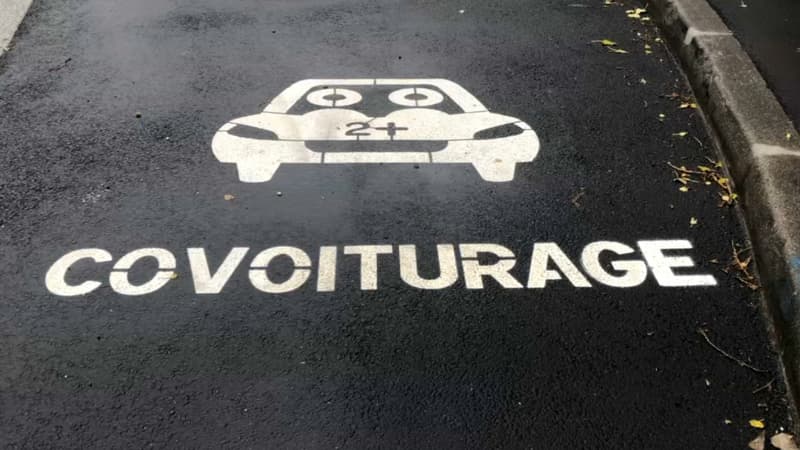Firstly, France has set the goal of fully decarbonizing transport by 2050. It sets an intermediate target of reducing transport by 28% by 2030, compared to 2015 levels. Our country is not on the trajectory correct to achieve this objective.
The environment and the health of French people affected by automobiles
Furthermore, the automobile influences the health of the French through air and noise pollutants. On the one hand, nitrogen oxides and fine particles harm human health and health authorities estimate 40,000 premature deaths. On the other hand, noise is a very present nuisance in the daily lives of French people: 86% say that noise bothers them at home. In our country, the social cost of noise is estimated at more than 147 billion euros per year, according to available data and knowledge. Road traffic generates 50 billion euros of social costs in France!
The switch to electricity will therefore have a massive positive effect on the environment, thanks to carbon-free electricity, and on the health of the French. Except it will be slow to replace the 39 million thermal vehicles in the national fleet. Thus, the car most purchased by the French is the Dacia Sandero, whose base price is 11,500 euros. The price of the Dacia Spring is still double that of the Dacia Sandero, although it is also lower. In addition, French household finances are under pressure from rising food and energy prices. Fuel costs more than 2 euros to travel. The French will have to mobilize several hundred billion euros more to pay the price differential between a thermal vehicle (gasoline or diesel) and an electric vehicle, to completely decarbonize the vehicle fleet.
Drastic measures to reduce polluting vehicles
If we collectively want to reduce CO2 emissions and fine particles, the challenge is to eliminate the most polluting vehicles from the vehicle fleet. It would then be necessary to target Crit’Air 5 and 4 vehicles, i.e. around 4 million cars. Therefore, I propose a strong measure: ban the circulation of Crit’Air 4 and 5 vehicles between now and 2030. Until then, to help the poorest families, all existing conversion aid, taxes on the weight of new vehicles and others on this objective. And I propose a second simple measure: finance 100% public aid for the most modest French, for a used Crit’Air 2 or 3 vehicle, within the limit of 7,500 euros. It is a measure valued at one billion euros per year and can be financed by redefining current priorities and aid.
It should be remembered that Crit’Air vehicles with diesel engines 5 and 4 do not have a particulate filter. Therefore, they are the most harmful to human health. Furthermore, full coverage for the poorest households would allow them to regain room for maneuver thanks to a reduction in fuel costs. It is clear that a Crit’Air 3 vehicle consumes less than a Crit’Air 5 vehicle.
Promote car sharing without spending money
No public transport network is in balance without the support of local authorities. IDF Mobility receives only 30% of its revenue from users. Without companies, local authorities and the State (which will contribute an additional €800 million to the fund in 2024), the IDF Mobilités budget could not be balanced. Increasing public transport networks therefore means increasing costs for local authorities. There is a shared transportation opportunity: carpooling.
According to the Autosolismo Observatory, of a million cars analyzed, in 85% there was only one person per week! Instead of proposing new spending on public transportation, we could try to promote carpooling. Let’s make carpooling a national cause. There is already public aid whose usefulness remains to be demonstrated.
What then are the measures that could encourage vehicle sharing? The management of public space is a lever to promote certain types of mobility. For example, the development of bicycle lanes is to the detriment of lanes dedicated to cars. Thus, we could use public space to increase car sharing… it would be possible to reserve 2% of parking spaces in France (for people with reduced mobility) and even 5% in the 22 French metropolises. It’s a simple law! It would directly give visibility to carpooling at a national level. It would also favor access to metropolises and cities, thanks to car sharing, to be able to park. How to control? It is enough to establish a link between car sharing applications and payment methods for parking in cities and metropolises.
In conclusion, without new measures, both unprecedented and demanding, it will be difficult to achieve public health and environmental protection objectives. We cannot rely solely on the finances of households and businesses to go electric. In 2030, with the elimination of Crit’Air 5 and 4 vehicles, the increase in the number of electric vehicles and the generalization of car sharing, France would drastically reduce its emissions of CO2, nitrogen oxides and fine particles on the road.
Source: BFM TV


